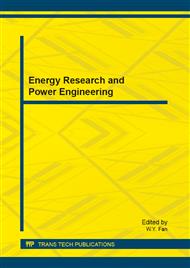[1]
Y. L. Guan, X. Chen, F. Q. Li and H. Gao: Int. J. Adhes. Adhes. Vol. 30 (2010), p.80.
Google Scholar
[2]
H. Kim, J. Kim: Microelectron. Reliab. Vol. 50 (2010), p.258.
Google Scholar
[3]
I. Mir, D. Kumar: Int. J. Adhes. Adhes. Vol. 28 (2008), p.362.
Google Scholar
[4]
Y. Li, K.S. Moon and C.P. Wong: Science. Vol. 308 (2005), p.1419.
Google Scholar
[5]
J.M. Kim, K. Yasuda and K. Fujimoto: J. Electron. Mater. Vol. 34 (2005), p.600.
Google Scholar
[6]
Y. Zhang, S. H. Qi, X. M. Wu and G. C. Duan: Synth. Met. Vol. 161 (2011), p.516.
Google Scholar
[7]
K. Suganuma: Curr. Opin. Solid State Mater. Sci. Vol. 5 (2001), p.55.
Google Scholar
[8]
S. Hsu, R.T. Wu: Mater. Lett. Vol. 61 (2007), p.3719.
Google Scholar
[9]
Y. Li, C.P. Wong: Mat. Sci. Eng. R. Vol. 51 (2006), p.1.
Google Scholar
[10]
N. L. Liu, S. H. Qi, S. S. Li, X. M. Wu and L. M. Wu: Polym. Test. Vol. 30 (2011), p.390.
Google Scholar
[11]
E. P. Wood and K. L. Nimmo: J. Electron. Mater. Vol. 23 (1994), p.8.
Google Scholar
[12]
S. L. C. Hsu and R. T. Wu: Mater. Lett. Vol. 61 (2007), p.3719.
Google Scholar
[13]
C. T. Murray, R. L. Rudman, M. B. Sabade and A. V. Pocius: Mater. Res. Bull. Vol. 28 (2006), p.449.
Google Scholar
[14]
Y. Li, K. Moon and C. P. Wong: Science. Vol. 308 (2005), p.1419.
Google Scholar
[15]
Y. Li and C. P. Wong: Mater. Sci. Eng. R. Vol. 51 (2006), p.1.
Google Scholar
[16]
H. K. Kim and F. G. Shi: Microelectronics. J. Vol. 32 (2001), p.315.
Google Scholar
[17]
D. Lu, D. Wong and C. P. Wong: J. Electron. Manufact. Vol. 23 (2000), p.241.
Google Scholar
[18]
F. Tan, X. Qiao, J. Chen and H. Wang: Int. J. Adhes. Adhes. Vol. 26 (2006), p.406.
Google Scholar
[19]
Y. Kwon, B. Yim, J. Kim and J. Kim: Microelectron. Reliab. Vol. 51 (2011), p.812.
Google Scholar
[20]
Y. Guan, X. Chen, F. Li and H. Gao: Int. J. Adhes. Adhes. Vol. 30 (2010), p.80.
Google Scholar
[21]
Y. Cai, Z. Yan and M. Zi: Progress In Chemistry. Vol. 20 (2008), p.1391.
Google Scholar
[22]
L. Stobinski, B. Lesiak and L. Kover: J. Alloys Compd. Vol. 501 (2010), p.77.
Google Scholar


